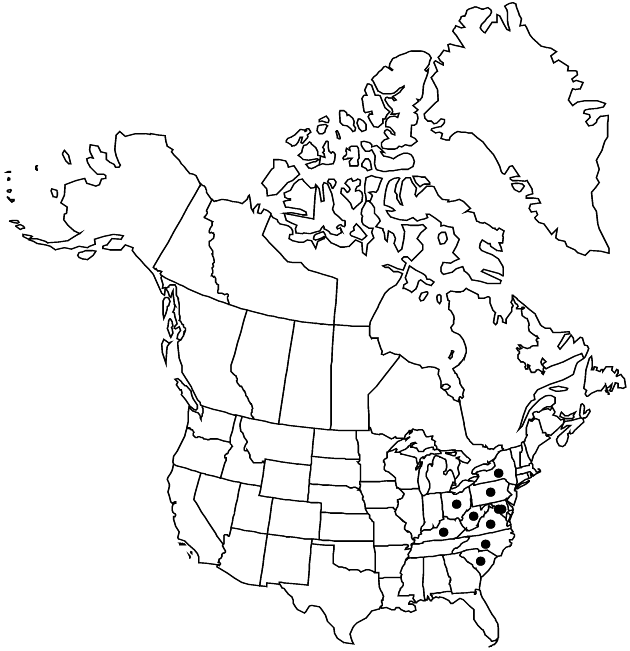Chrysogonum virginianum var. virginianum
Endemic
Synonyms: Chrysogonum virginianum var. dentatum
Treatment appears in FNA Volume 21. Treatment on page 75.
Plants not stoloniferous (not colonial or mat-forming). Stems (flowering): earliest leafless, later stems leafy, 15–35 (–50) cm. Leaf-blades deltate-ovate, bases abruptly cuneate to truncate or subcordate, faces minutely strigoso-hirsutulous (hairs ascending-appressed, 0.1–0.3 mm). Peduncles 2–22 cm. Outer phyllaries 6–11 (–15) × 3–7 mm. 2n = 32.
Phenology: Flowering late Mar–Jun(–Jul, later with moisture).
Habitat: Moist to dry woodlands, forests, partially sunny sites, clearings, edges
Elevation: 10–700 m
Distribution

D.C., Ky., Md., N.Y., N.C., Ohio, Pa., S.C., Va., W.Va.
Discussion
Selected References
None.
Lower Taxa
None.
"broader" is not a number.
... more about "Chrysogonum virginianum var. virginianum"
introrse +
connate +
herbaceous +
3-toothed +
scarious +
absent +
hirsute +
papillate +
bristlelike +
continuous +
elliptic-ovate;deltate-ovate +
winged;ribbed;winged;ribbed +
1;15 +
stigmatic +
absent +
zygomorphic +
yellow +
winged +
dimorphic +
staminate +
staminate +
straight +
strigoso-hirsutulous +
distinct +
proximal +
1;5 +
bisexual +
dispersed +
singly +
discoid +
indeterminate +
surrounding +
cupulate-hemispheric +
elliptic +
deltate-ovate +
petiolate +
opposite +
deltate +
crenate +
2-carpellate +
inferior +
attached +
anatropous +
singly +
4 cm40 mm <br />0.04 m <br /> (?) +
persistent +
fragile +
falling +
absent +
coroniform +
tough +
thick +
absent +
connate +
persistent +
distinct +
falling +
Sp. Pl. +
1753 +
pistillate +
absent +
fertile +
paleate +
flat;shallowly convex +
fibrous +
exalbuminous +
modifed +
Endemic +
alternate +
later +
earliest +
continuous +
2-branched +
papillate +
Chrysogonum virginianum var. virginianum +
Chrysogonum virginianum +
variety +
shorter +
cylindric +
shorter to longer than campanulate +
perennial +
not stoloniferous +